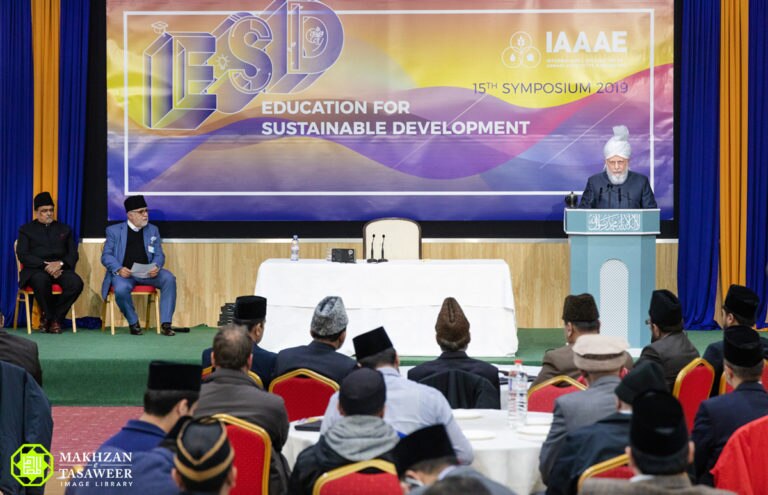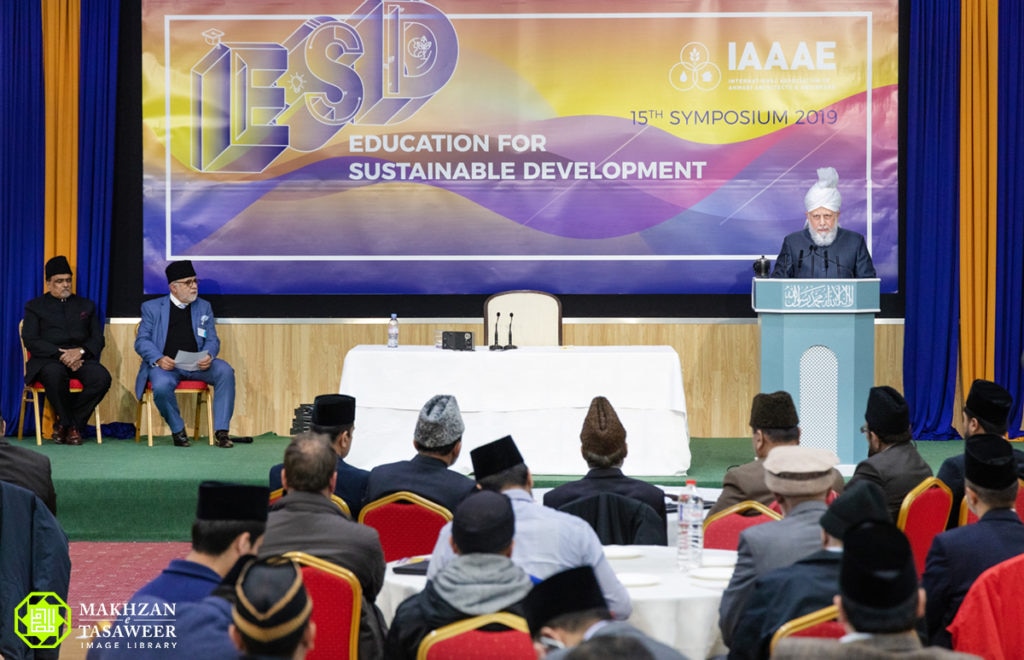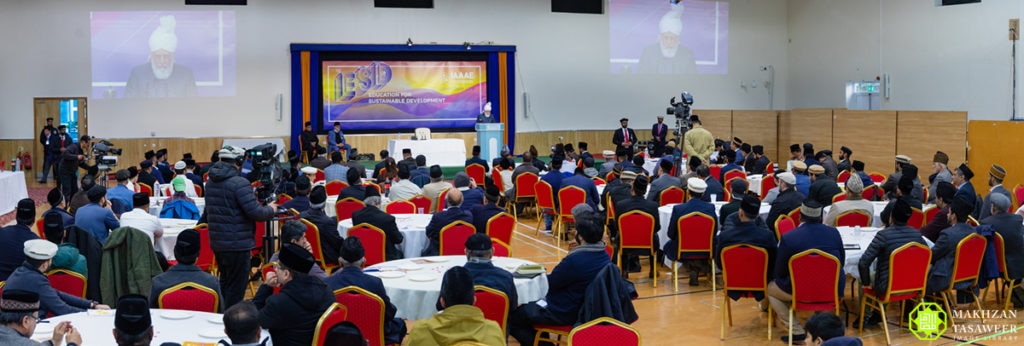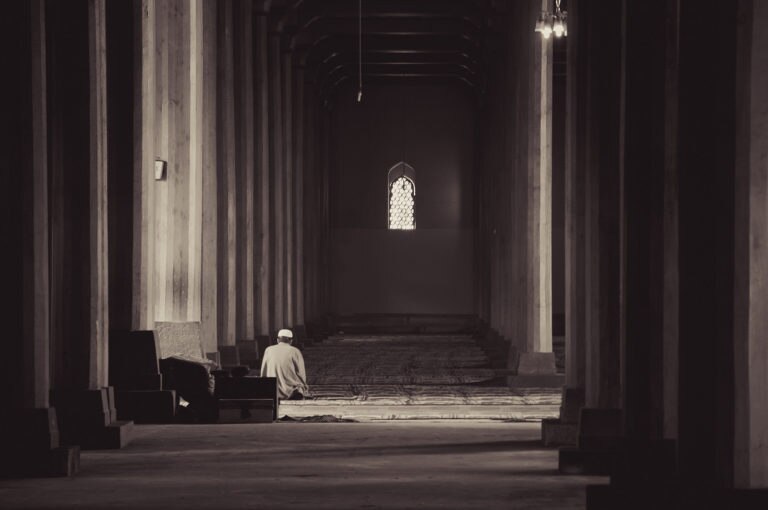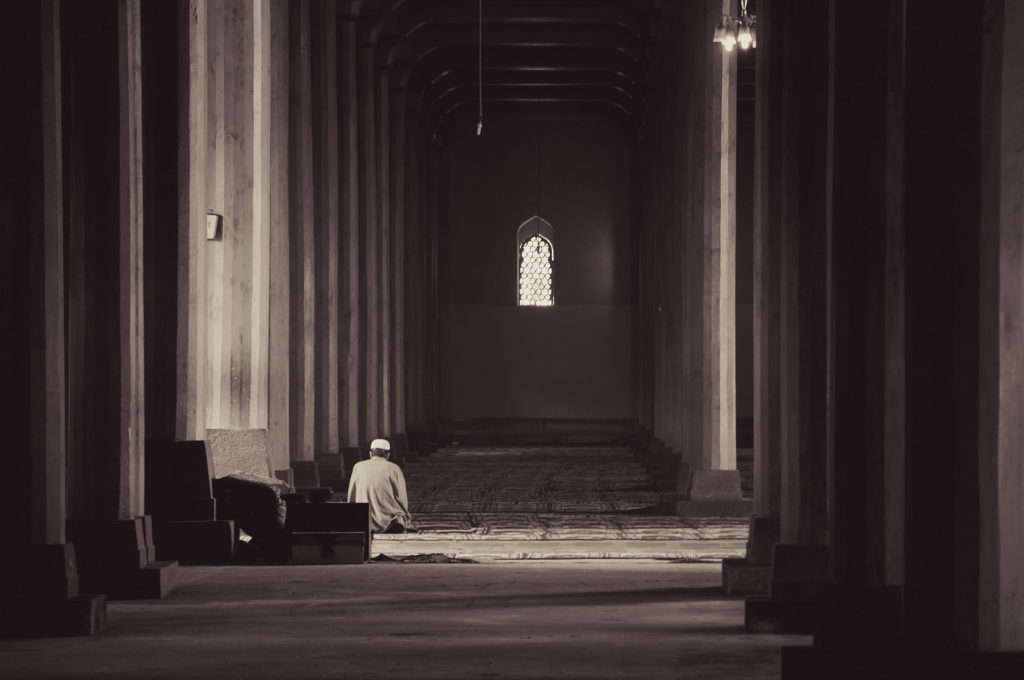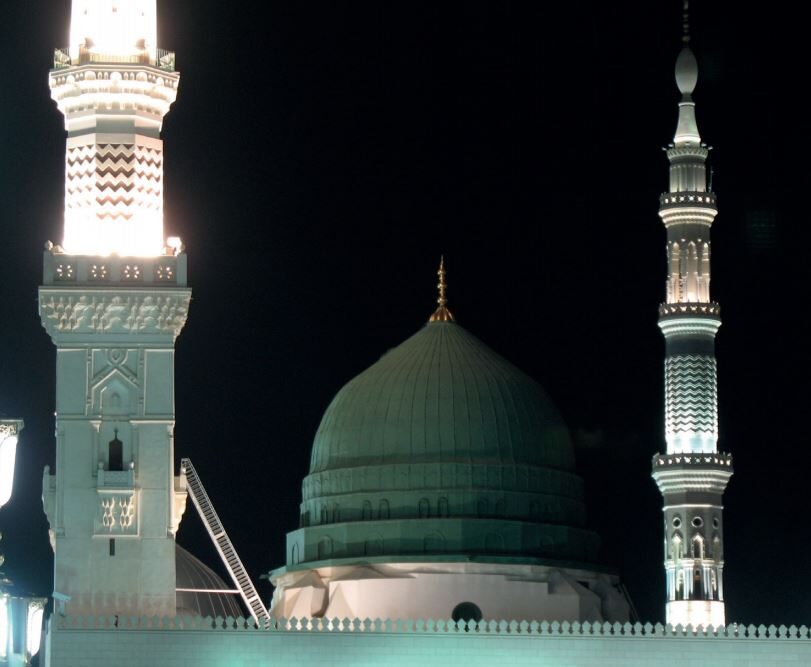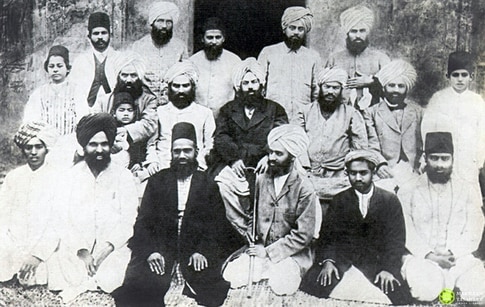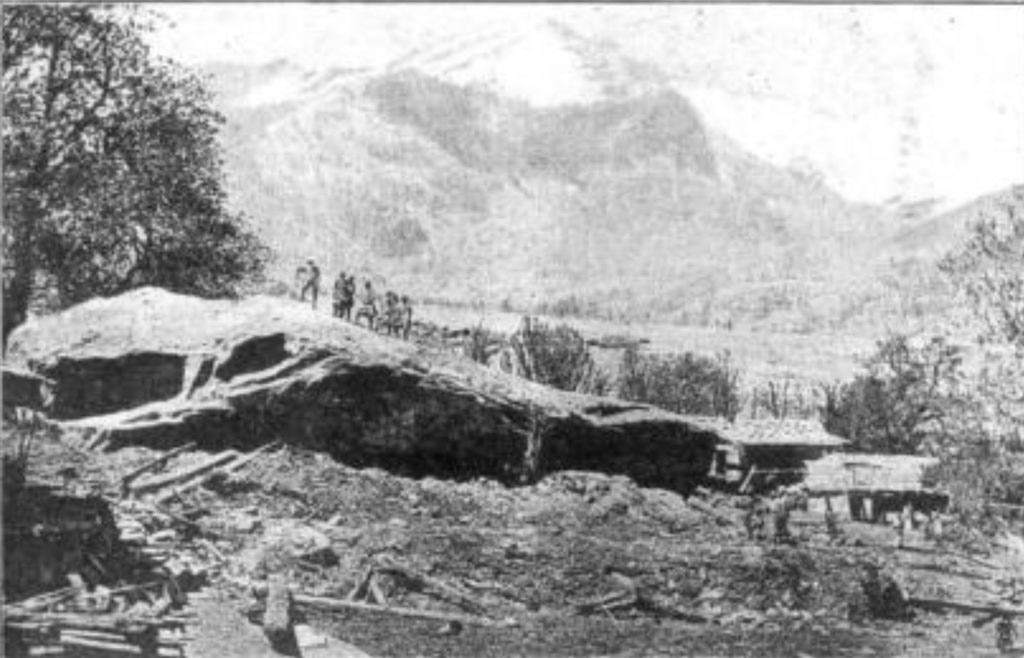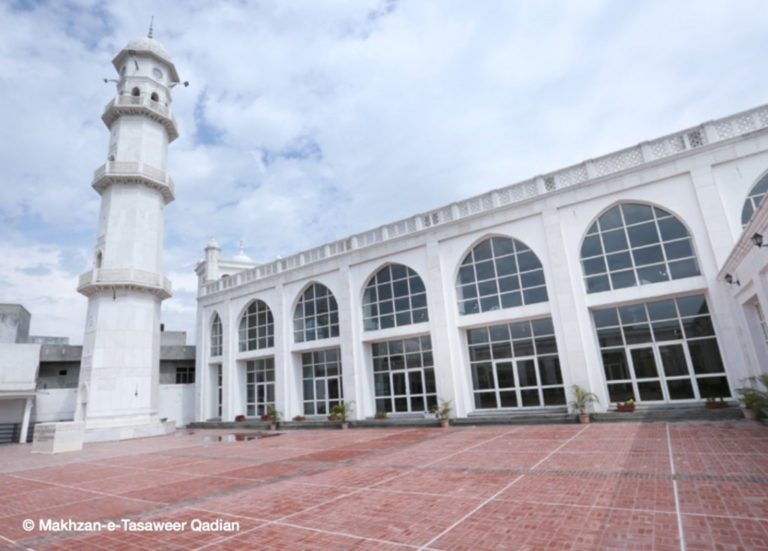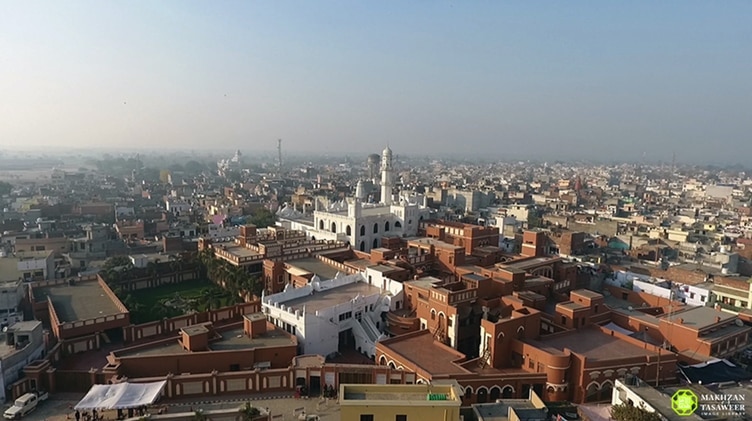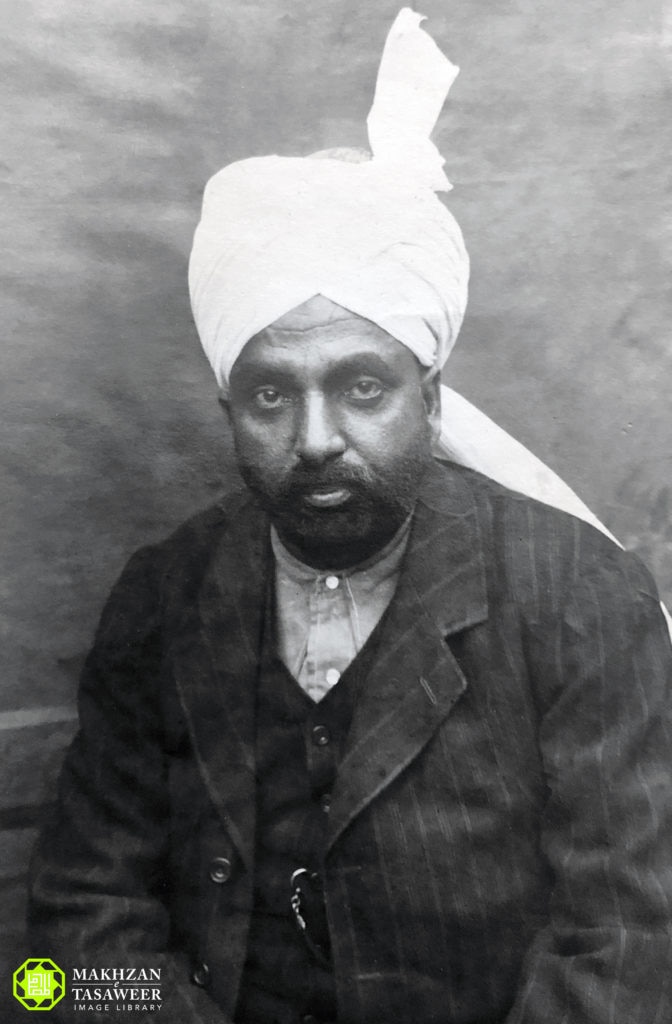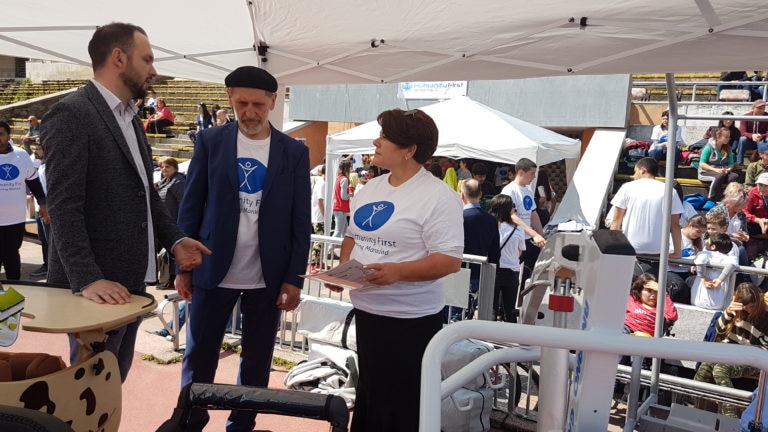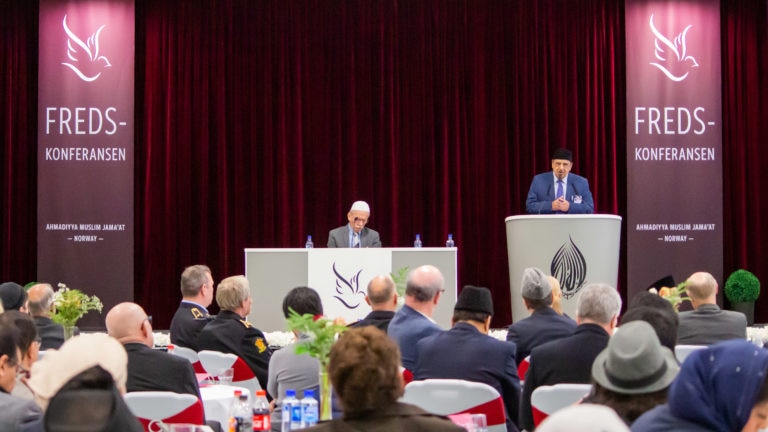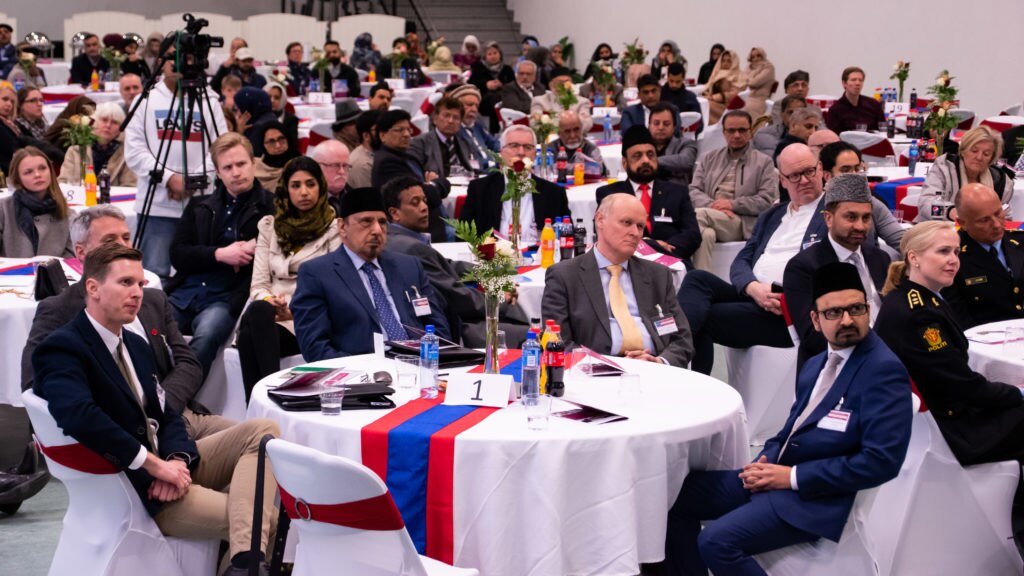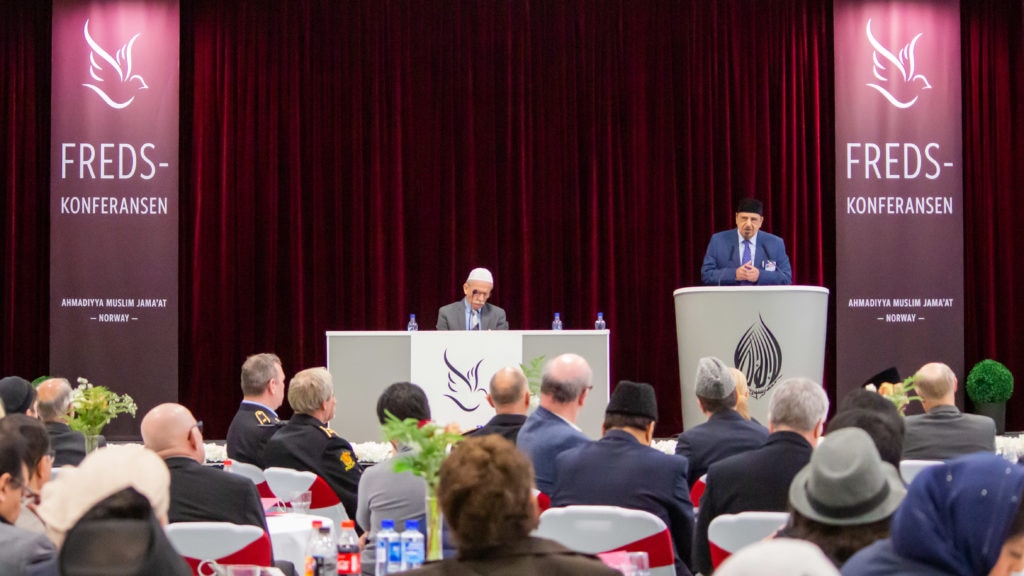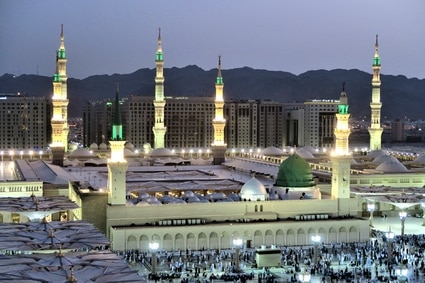What is the purpose of fasting?
Allah the Almighty states in the Holy Quran:
يَا أَيُّهَا الَّذِينَ آمَنُوا كُتِبَ
عَلَيْكُمُ الصِّيَامُ كَمَا كُتِبَ عَلَى الَّذِينَ مِن قَبْلِكُمْ لَعَلَّكُمْ
تَتَّقُونَ
“Fasting is prescribed for you, as it was
prescribed for those before you, so that you may become righteous.” (Surah
al-Baqarah, Ch.2: V.184)
Fasting is a way to mend
one’s soul by leaving one’s own desires for Allah. It nourishes the believer in
almost every area of their spiritual life. A person becomes aware and
personally experiences what hunger, poverty, loneliness and discomforts mean to
the less fortunate sections of society. As a result, a person abstains from performing
bad deeds and strives to do good works during Ramadan.
The Holy Prophet Muhammad,
peace and blessings of Allah be upon him, said:
“Whoever wakes up in the
middle of the night and offers prayer with the intention of reward and to
fulfil the demand of belief, and fasts, his previous sins are forgiven.” (Sahih
al-Bukhari, Kitab as-Saum)
Hazrat Mirza Bashiruddin
Mahmud Ahmad, Khalifatul Masih IIra states:
“The purpose of fasting is
not to starve. If one could enter Paradise by starvation, then in my view,
disbelievers and hypocrites would be ready to do so, as it is not so difficult.
In reality, the challenging thing is moral and spiritual transformation. People
starve themselves for the most trivial of matters; prisoners go on hunger
strikes; Brahmans famously stop eating when they are not listened to. Thus, it
is nothing extraordinary to remain hungry, nor is it the purpose of Ramadan.
“Ramadan’s actual purpose is
to abstain from everything for Allah during this month and fasting is a way of
expressing that one can leave every right for Allah. Eating, drinking, conjugal
relationships between a husband and wife, etc. are all rights of a person;
whosoever leaves these rights, shows that they are ready to leave their rights
for Allah.” (Al Fazl, 17 December 1966)
As fasting is a source of
spiritual elevation, there are physical benefits to it as well which include
good health, patience and strength to bear hardships.
How should one keep fasts?
Allah the Almighty states in the Holy Quran:
وَكُلُوْا وَاشْرَبُوْا حَتّٰى يَتَبَيَّنَ
لَكُمُ الْخَيْطُ الْأَبْيَضُ مِنَ الْخَيْطِ الْأَسْوَدِ مِنَ الْفَجْرِ
“And eat and drink until the
white thread becomes distinct to you from the black thread of the dawn.” (Surah
al-Baqarah, Ch.2: V.188)
In order to fast, one should
eat and drink before the time of Fajr, which is called sehri (or sahoor).
The Holy Prophetsa
said:
“Eat sehri because
there are blessings in eating sehri.” (Sahih al-Bukhari, Kitab
as-Saum)
However, if someone has the
intention to fast but happens to wake up late without deliberation and the time
for sehri is over, it is permissible to keep fast without eating sehri.
Intention is also mandatory
for keeping fasts. A person who wishes to observe the fast must have the
intention to fast.
The Holy Prophetsa said:
“Whoever does not have the
intention of fasting before morning, he has no fast.” (Jami‘ at-Tirmidhi,
Kitab as-Saum)
Although words are not
necessary to show the intention of fast, but traditionally the following words
are expressed after eating sehri:
وَبِصَوْمِ غَدٍ نَّوَيْتُ مِنْ شَهْرِ
رَمَضَانَ
“I hereby express my intention to keep the
fast of tomorrow during the month of Ramadan.”
Hazrat Khalifatul Masih IIra
states:
“For fasting, intention is
necessary. Without it, there is no reward. Intention is from the heart. One is
allowed to eat and drink until they see light from the eastern horizon. If one
takes precautions and is later told that daybreak has already happened, his
fast will still remain. The time span between eating and Fajr prayer for the
Holy Prophetsa was equal to the time spent on reciting 50 verses.” (Al
Fazl, 28 July 1914)
However, if someone intends
to fast throughout the month of Ramadan but forgets to make a proper intention
for a fast or two, this won’t affect their fast. Also, if there is a valid
excuse – for instance, they are mistakenly informed about the appearance of the
moon of Ramadan after Fajr time and they have not eaten anything – they may still
make the intention of the fast and it will count.
How should one break their fast?
Allah the Almighty states in the Holy Quran:
ثُمَّ أَتِمُّوا الصِّيَامَ إِلَى اللَّيْلِ
“Then complete the fast till
nightfall.” (Surah al-Baqarah, Ch.2: V.188)
It was the practice of the
Holy Prophetsa to open a fast with a date, milk or simple water. The
Holy Prophetsa said:
“When one wants to open a
fast, they should open it with a date because there are blessings in it. If
this is not available, then open it with water because it is a very pure
thing.” (Jami‘ at-Tirmidhi, Kitab as-Saum)
The prayer for opening the
fast is:
اَللّٰهُمَّ اِنِّی لَکَ صُمْتُ وَبِکَ
اٰمَنْتُ وَعَلَيْکَ تَوَکَلَّتُ وَعَلٰی رِزْقِکَ اَفْطَرْتُ
“O Allah, I observed the fast
for Your sake. I believe in You and I put my trust in You and I end the fast
with what You have provided me.”
According to the sayings of
the Holy Prophetsa, it is essential that one should break their fast
immediately after sunset. Prolonging it beyond this point is not acceptable.
The Holy Prophetsa said:
“My people will adhere to good as long as they hasten to break their fast [at the fixed time].” (Sahih al-Bukhari, Kitab as-Saum)
Who is fasting obligatory for?
Allah
the Almighty states in the Holy Quran:
شَهْرُ رَمَضَانَ الَّذِيْ أُنْزِلَ فِيْهِ الْقُرْآنُ
هُدًى لِّلنَّاسِ وَبَيِّنَاتٍ مِّنَ الْهُدَى وَالْفُرْقَانِ فَمَنْ شَهِدَ
مِنْكُمُ الشَّهْرَ فَلْيَصُمْهُ
“The
month of Ramadan is that in which the Quran was sent down as a guidance for
mankind with clear proofs of guidance and discrimination. Therefore, whosoever
of you is present [at home] in this month, let him fast therein.” (Surah
al-Baqarah, Ch.2: V.186)
During
the month of Ramadan, the observance of fasts is mandatory upon every adult
Muslim man and woman who is healthy, muqim (stationary, not travelling)
and able to fast.
Only
those have been given exemption who are sick or travelling etc. Such people can
complete their fasts later. Those who are suffering from a chronic illness, are
weak or a woman who is pregnant or breastfeeding etc. and are incapable of
fasting, as compensation during the rest of the year, can offer fidya (feeding
of a poor man). This is stated in the Holy Quran by Allah the Almighty:
فَمَنْ كَانَ مِنْكُمْ مَّرِيضًا أَوْ عَلَىٰ سَفَرٍ
فَعِدَّةٌ مِّنْ أَيَّامٍ أُخَرَ ۚ وَعَلَى الَّذِينَ يُطِيْقُوْنَهُ فِدْيَةٌ
طَعَامُ مِسْكِيْنٍ
“And
whoso among you is sick or is on a journey [shall fast] the same number of
other days; and for those who are able to fast [only] with great difficulty is
an expiation – the feeding of a poor man.” (Surah al-Baqarah, Ch.2: V.185)
Regarding
the fasting of children, it should be kept in mind that they should be trained
to observe fasts through a gradual process. Owing to the atmosphere of devotion
to values of faith, at a very early stage they begin to exhibit an eagerness to
keep fasts, but parents
should restrain young children from observing entire fasts too frequently as
this can affect their growth. Children may be permitted to keep one or two
fasts as a practice before they become fully mature to observe mandatory
fasts.
What is the guidance for those who deliberately
abstain from fasting?
Allah
the Almighty states in the Holy Quran:
وَأَنْ تَصُوْمُوْا خَيْرٌ
لَّكُمْ
“Fasting
is good for you.” (Surah al-Baqarah, Ch.2: V.185)
Fasting
is one of the pillars of Islam. One should be extremely cautious and watchful
regarding the fasting of Ramadan. If someone consciously refrains from fasting
without any excuse and cares not about the command of Allah the Almighty, they
may not ever be able to make up for this mistake, even if they fast for the
rest of their lives. It means every person upon whom it is mandatory to fast
must take the fasting of Ramadan seriously.
The Holy
Prophet Muhammad, peace and blessings of Allah be upon him,said:
“Anyone
who does not fast on any of the days of Ramadan without lawful excuse or
illness will never be able to ransom the loss even if he fasts for the rest of
his life.” (Musnad Darimi, Baab Man aftara yauman min Ramadan
muta‘amidan)
The
terms “illness” or “journey” are not defined by the Holy Quran because they are
left to be defined by common usage of the people and the attending
circumstances. If doctors do not recommend fasting, one must refrain from
fasting.
Hazrat
Mirza Bashiruddin Mahmud Ahmad, Khalifatul Masih IIra states:
“In my
opinion there are some people who take fasting as something trivial and leave
it due to minor excuses. At times, they possess a thought that they will become
sick and abstain from fasting, even though there is no excuse to quit fasting,
with only the mere thought that they will become sick. One can leave fasting
only in the condition that they are sick, and sick to the extent that fasting
is harmful. It is unacceptable for a person experiencing a sickness which has
no risk through fasting to not fast.” (Al Fazl, 11 April 1925)
What is the status of one who fasts?
Fasting
spiritually elevates the status of a believer and draws the love of Allah the
Almighty for His creation. The Holy Prophet Muhammad, peace and blessings of
Allah be upon him,said:
“Allah
declares that each act of man is for himself, apart from fasting. Fasting is
for Allah and Allah alone is its reward.” (Sahih al-Bukhari, Kitab
al-Saum)
Fasting
helps a person wash away their previous sins and come closer to Allah the
Almighty. The Holy Prophet Muhammad, peace and blessings of Allah be upon him,said:
“Whoever
wakes up in the middle of the night and offers prayer with the intention of
reward, fulfilling the demand of belief, and fasts, their previous sins are
forgiven.” (Sahih al-Bukhari, Kitab as-Saum)
Allah
the Almighty begins to love that person who restrains from drinking, eating and
sexual desires etc., thereby pardoning their earlier mistakes and errors,
making them pure like a new born child. The Holy Prophet Muhammad, peace and
blessings of Allah be upon him,said:
“By the Being in whose hands is the life of Muhammad! The odour from the mouth of a person fasting is much more pure and pleasant than that of kasturi [deer’s scent].” (Sahih al-Bukhari, Kitab as-Saum)
Explaining
the following verse of the Holy Quran:
شَهْرُ رَمَضَانَ الَّذِيْ
أُنْزِلَ فِيْهِ الْقُرْآنُ
“The
month of Ramadan is that in which the Quran was sent down” (Surah al-Baqarah,
Ch.2: V.186), Hazrat Mirza Ghulam Ahmad, the Promised Messiahas
states:
“This
verse indicates the greatness of the month of Ramadan. The sufis have recorded
that this is a good month for the illumination of the heart. The one who
observes fasts has frequent experience of visions in this month. Salat purifies
the spirit and the fast illuminates the heart. The purification of the spirit
means that one may be delivered from the passions of the self that incites to
evil; and the illumination of the heart means that the gates of vision may be
opened so that one may be able to behold God.” (Malfuzat, Vol. IV, pp.
256-257)
What renders a fast invalid?
A fast
is broken by eating, drinking or conjugal relationships between a husband and
wife. It is also broken by bleeding profusely, either by accident or illness,
or by vomiting deliberately.
If
someone accidently breaks a fast of Ramadan, there is no sin, but they will
have to make up for the fast later. However, if a person mistakenly eats or
drinks and immediately or after some time realises that they were fasting, then
there is no sin in it.
It is
stated by the Holy Prophet Muhammad, peace and blessings of Allah be upon him:
“Whoever
forgets that they are fasting and eats or drinks, then they should still
complete their fast. It is only Allah who fed him and gave him drink.” (Sahih
al-Bukhari, Kitab as-Saum)
During
Ramadan, if a woman’s menstrual cycle begins, she should stop fasting and make
up for the missed fasts later.
The fatwa
(verdict) for those who break the fast of Ramadan deliberately, being compelled
by an inner desire or a sudden burst of feelings, can be found in the sayings
of the Prophet Muhammad, peace and blessings of Allah be upon him.
It is pointed out in Sahih al-Bukhari, Kitab al-Saum that whoever breaks a fast of Ramadan on purpose must fast the one missed, plus 60 consecutive fasts. If one cannot fast, then they must feed 60 poor people, either together or separately. Or, they can feed one person for 60 days or give the required amount in money. If one cannot feed anyone, then they should beseech the mercy and blessings of Allah.
What is
the guidance about fasting during a journey or illness?
Allah
the Almighty states in the Holy Quran:
فَمَنْ كَانَ مِنْكُمْ مَّرِيضًا أَوْ عَلَىٰ سَفَرٍ
فَعِدَّةٌ مِّنْ أَيَّامٍ أُخَرَ
“And
whoso among you is sick or is on a journey [shall fast] the same number of
other days.” (Surah al-Baqarah, Ch.2: V.185)
The
above-mentioned Quranic injunction clearly states that one should refrain from
fasting during a journey or in sickness and make up the lost count on other
days.
Hazrat
Amrra ibn Umayyah reported, “I came to the Holy Prophet Muhammad,
peace and blessings be upon him, from a journey and he said, ‘Stay, so that we
can eat, O Abu Umayyah.’ I said, ‘I am fasting.’ The Holy Prophet Muhammadsa
said, ‘Come close to me and I will tell you about the traveler. Surely, Allah
Almighty has relieved him from fasting and half of the prayer.’” (Sunan
al-Nasai, Kitab as-Saum)
It
should be noted here that we find certain sayings of the Holy Prophetsa
which show that he did sometimes fast whilst travelling but this happened only
when he was keeping voluntary fasts and not the fasts of Ramadan.
Hazrat
Jabirra relates that once, the Holy Prophetsa was on a
journey and he saw a crowd around a person over whom a shade had been erected.
The Holy Prophetsa asked “What is the matter?” to which the people
replied that the man was fasting. The Holy Prophetsa said, “It is no
virtue to keep a fast while travelling.” (Sahih al-Bukhari, Kitab
as-Saum)
The
Promised Messiahas states:
“Whosoever
fasts in Ramadan during sickness or journey clearly disobeys the command of
God. God has clearly said that the sick and travellers should not fast. A sick
person should fast after recovering from sickness and the traveller should fast
after completing the journey. This injunction should be heeded for repentance
is through the grace of Allah and not by a forceful exhibition of one’s
physical strength. God has not specified what the length of the journey should
be, nor has he set a criterion for the degree of sickness. The injunction is
general and thus, if a person keeps a fast, they are succumbing to
transgression against the command of God.” (Badr, 17 October 1907, p.7)
Hazrat
Mirza Bashir Ahmadra writes that Mian Fazl Muhammad Sahib
(shopkeeper, Mahalla Dar-ul-Fazl) wrote to him saying,
“During
litigation with Maulvi Muhammad Hussain Batalvi, for a court hearing, we had to
go to Dhariwal. It was a hot summer’s day and in the month of Ramadan. Many
friends had convened at Dhariwal, many of whom were fasting. One of the influential
chieftains [who was a lady] extended an invitation to the Promised Messiahas.
Huzooras accepted the invitation. The chieftess presented sweet rice
alongside other foods. Some companions asked Huzooras regarding
their fasts. Huzooras said, ‘It is not permissible to fast while on
a journey.’ Therefore, all of the companions broke their fasts.” (Siratul-Mahdi,
Vol. 2, p. 303)
During
Ramadan, if a woman’s menstrual cycle begins, she should stop fasting and make
up for the remaining fasts on other days. The woman who is pregnant or breast
feeding is exempted from fasting because she falls in the category of sick. The
Holy Prophet Muhammadsa said:
“Allah
has relieved the pregnant woman and the suckling woman from fasting.” (Sunan
Abu Dawood, Kitab as-Saum)
According to the saying of the Promised
Messiahas, those who are permanently sick, travellers or mothers who
know that they will not find the opportunity to fast, either because of being
very old or breast-feeding, they should not fast and should give Fidya because
it is almost impossible for them to fast. (Al Badr, 24 October 1907, p.
3)
What is the guidance for the one who journeys for
work?
If
someone travels far for work or their livelihood is based on travelling, then
they must fast because they are used to this routine.
Once the
Promised Messiahas was asked about the person who travels for work
whether such a person’s travel fall in the category of a journey? Huzooras
replied:
“[The
person who travels for work] their journeys should not be considered journeys
because they are part of their work.” (Al Fazl, 16 August 1948)
What is the guidance for the one who travels to Markaz
or temporarily settles somewhere during Ramadan?
Hazrat
Mirza Bashiruddin Mahmud Ahmad, Khalifatul Masih IIra said:
“When
Jalsa Salana was due in Ramadan and the question arose of whether or not the
visitors should fast during the days of Jalsa, an individual reported that in
the time of the Promised Messiahas, when the Jalsa was held during
Ramadan, they personally served Sehri [as breakfast] to the guests. In
the given circumstances, on the basis of the edict given by the Promised
Messiahas, I have permitted the visitors of Jalsa to observe fasts.
Previous scholars even permitted observing fasts on journeys, and non-Ahmadi
maulvis of today do not consider modern-day travels worthy of being called a
journey. Nonetheless, the Promised Messiahas forbade observing fasts
during journeys, however he himself has permitted to observe fasts whilst
staying in Qadian [the Markaz]. Thus, it is improper to consider one of his
edicts and abandon another.” (Al Fazl, 4 January 1934, pp. 3-4)
The
general guidance is that if someone settles somewhere for at least 15 days or
more and they are able to make preparations for Sehri and Iftari,
they should observe fasts.
However,
Hazrat Syed Muhammad Sarwar Shahra states that the Promised Messiahas
said about fasting:
“If
somebody stays somewhere for more than three days, they may fast but they may
not do so if they are staying for less than three days. If somebody who is
staying for less than three days observes fasts in Qadian, then there is no
need to fast again [in compensation].” (Fatawa Hazrat Syed Muhammad Sarwar
Shah Sahib, Register no. 5, Dar-ul-Ifta, Rabwah)
Thus, it
all solely depends on the heart and intention of the person. If someone
considers their journey worthy of falling in the category of a journey, they
should refrain from fasting. On the other hand, if they realise that their
travel does not fall in the category of journey, they should fast.
What is the guidance for the one whose illness does
not affect their fast?
The term
“illness” has not been defined by Allah the Almighty in the Holy Quran. Thus,
regarding an illness, one should decide with Taqwa if someone is able to fast
or not. The Promised Messiahas said:
“There
are certain kinds of illnesses in which a person continues to perform other works
… Hence, if one can find time to perform other works, then what is the reason
that he does not observe fasts?” (Al Fazl, 16 August 1948)
It
should be borne in mind that if doctors do not recommend fasting, one must
refrain from fasting.
The
Promised Messiahas states:
“As far
as I am concerned, I do not leave a fast unless it is likely to cause my death;
I do not feel inclined to leave a fast. These are blessed days and the days of
the showering of God’s blessings and mercy.” (Al Hakam, 24 January 1901)
What are those actions and conditions by which a fast
does not break?
- Below is the list of certain actions and situations which do not render a fast invalid:
- Brushing your teeth or using miswak (a teeth cleaning twig)
- Rinsing your mouth
- Rinsing your nose
- Putting oil on your beard or hair
- Smelling or wearing perfume
- Taking a shower
- Putting on surma (but it is better to apply it at night)
- Accidental vomiting
- Forgetfully eating or drinking
- Bleeding gums
What is fidya and why is it offered?
Allah
the Almighty states in the Holy Quran:
فَمَنْ
كَانَ مِنْكُمْ مَّرِيْضًا أَوْ عَلَىٰ سَفَرٍ فَعِدَّةٌ مِّنْ أَيَّامٍ أُخَرَ ۚ
وَعَلَى الَّذِيْنَ يُطِيْقُوْنَهُ فِدْيَةٌ طَعَامُ مِسْكِيْنٍ
“And
whoso among you is sick or is on a journey [shall fast] the same number of
other days; and for those who are able to fast [only] with great difficulty is
an expiation – the feeding of a poor man.” (Surah al-Baqarah, Ch.2: V.185)
The
general rule is that one should be eager to fast during the month of Ramadan.
However, those who are permanently sick, weak or a woman who is pregnant or
breastfeeding continuously etc., and do not possess the strength
to fast may offer fidya (expiation).
In addition, a person who is not able to fast owing to a genuine reason and can
fast at a later time may also give fidya, as it is a virtue. However, it is
essential for such a person to fast at a later time.
As far
as the quantity or amount of fidya is concerned which is given to a poor
person, its guidance is present in the Holy Quran:
مِنْ أَوْسَطِ مَا تُطْعِمُوْنَ أَهْلِيْكُمْ
“With
such average food as you feed your families with” (Surah al-Maidah, Ch.5:
V.90). Thus, for every missed fast, a person should feed a poor person two
times a day or offer the amount needed for it. Hazrat Mirza Masroor Ahmad,
Khalifatul Masih Vaa states:
“Although
fasting has been prescribed for the development of taqwa [righteousness], but
as Islam is a religion in line with nature, therefore it makes allowances for
situations which naturally arise in life. However, attainment of taqwa should
always be the aim, so if fasting is not possible, then either a needy person should
be fed or fidya should be paid.” (Friday Sermon, Baitul Futuh Mosque, 21
September 2007)
Explaining
the true philosophy and purpose of offering fidya, the Promised Messiahas
states:
“Once I
had an intuition about the philosophy behind fidya and observed that the main
objective behind it is to attain the means whereby one can observe fasts. Allah
the Almighty provides all the abilities and one should ask Him for everything.
Allah is the All-Powerful and if He Wills, He can grant the strength needed for
fasting to a feeble person. So, fidya provides one with the strength to observe
fasts and it can only be delivered by the grace of Allah the Almighty. Thus, I
believe that one should pray to Allah, asking for strength, ‘O Lord! This is
your blessed month and I am being deprived of its blessings. I do not know if I
will live to see the next year’s Ramadan or if I may find the opportunity to
compensate and observe the missing fasts.’ I am certain that Allah the Exalted
would bless such a person the strength to observe fasts.” (Al Badr, 12
December 1902, p. 52)
Hazrat
Mirza Bashiruddin Mahmud Ahmad, Khalifatul Masih IIra states:
“Fidya
does not invalidate the obligation of fasting. Fidya is for those people who,
under a reason permitted by the Sharia, are unable to participate in the
blessed days of Ramadan in performing this worship alongside other Muslims.
These excuses are of two types: temporary and permanent. Fidya should be given
in both these conditions depending on financial means of the person. Although
one may offer fidya, but after one, two or three years, whenever the person
finds good health, they should observe those missed fasts. The exception is for
those who initially suffered temporary ailments and after getting well,
intended to observe the fasts every day but their health deteriorated to a
state of permanent illness. Whoever finds financial means and falls in the
category of a traveler or sick, should provide an underprivileged person with a
meal as fidya and observe the missed fasts on other days. This was the practice
of the Promised Messiahas – he used to give fidya, eventually
observing fasts too. He used to admonish others about this as well.” (Tafsir-e-Kabir,
Vol. 2, p. 389)
What is etikaf in the month of Ramadan?
Allah
the Almighty states in the Holy Quran:
وَعَهِدْنَا إِلَىٰ إِبْرَاهِيمَ وَإِسْمَاعِيلَ أَن
طَهِّرَا بَيْتِيَ لِلطَّائِفِينَ وَالْعَاكِفِينَ وَالرُّكَّعِ السُّجُودِ
“And We
commanded Abraham and Ishmael, saying, ‘Purify My House for those who perform
the circuit and those who remain [therein] for devotion and those who bow down
and fall prostrate in prayer.’”(Surah al-Baqarah, Ch.2: V.126)
Etikaf is a
form of worship which is generally observed during the last ten days, beginning
from the Fajr prayer on the twentieth in the month of Ramadan by staying in a
mosque. After fasting for 20 days in the month of Ramadan, a believer feels an
eagerness to attain as much pleasure and delight of Allah the Almighty as
possible, and therefore, in the last ten days of Ramadan, with much enthusiasm
and vigour, strives to achieve the nearness of Allah the Almighty.
The most
suitable place to perform etikaf is a mosque, as it is stated in the
Holy Quran:
وَأَنْتُمْ عَاكِفُوْنَ فِي الْمَسَاجِدِ
“While
you remain in the mosques for devotion.” (Surah al-Baqarah, Ch.2: V.188)
It is
reported that the Holy Prophetsa used to tighten his girdle, stay
awake for most of the night for prayers and exhort his family to do the same
during the last ten days of Ramadan.
Hazrat
Aishara reported that every year till the time of his demise, the
Holy Prophetsa used to observe etikaf in the mosque during
these ten days and nights of Ramadan, and the same practice was continued by
his wives after his demise. (Sahih al-Bukhari, Kitab al-Etikaf)
Hazrat
Abu Hurairara narrated that the Holy Prophet, peace and blessings of
Allah be upon him, went into retreat for ten days in the month of Ramadan but
in the year in which he passed away, he went into retreat for twenty days. (Sahih
al-Bukhari, Kitab al-Etikaf)
During etikaf
it should be kept in mind that a person should try to completely cut off from
the material world and should make a habit of sacrificing worldly desires. One
should not leave the place of etikaf except for when necessary (for
example, using the bathroom etc.). It is not permissible to have conjugal
relations even at night during etikaf.
What is Lailatul Qadr (the night of decree)?
Allah
the Almighty states in the Holy Quran:
إِنَّا أَنْزَلْنَاهُ فِيْ لَيْلَةِ الْقَدْرِ۔ وَمَا
أَدْرَاكَ مَا لَيْلَةُ الْقَدْرِ۔ لَيْلَةُ الْقَدْرِ خَيْرٌ مِّنْ أَلْفِ
شَهْرٍ۔ تَنَزَّلُ الْمَلَائِكَةُ وَالرُّوحُ فِيْهَا بِإِذْنِ رَبِّهِمْ مِّنْ
كُلِّ أَمْرٍ۔ سَلَامٌ هِيَ حَتَّى مَطْلَعِ الْفَجْرِ
“Surely,
We sent it [the Quran] on the Night of Destiny. And what should make thee know
what the Night of Destiny is? The Night of Destiny is better than a thousand
months. Therein descend angels and the Spirit by the command of their Lord with
their Lord’s decree concerning everything. Peace – so will it be even at the rising
of the dawn.” (Surah al-Qadr, Ch.97: V.1-6)
Lailatul
Qadr is a night of great blessings in which Allah the Almighty showers His
Mercy upon His sincere and faithful believers. It is said that the Holy Quran’s
revelation began on this very night and it is generally associated with the
showering of blessings and mercy of Allah the Almighty in the month of Ramadan,
particularly in its last ten days. However, it possesses other meanings as well
which are all deeply rooted in Allah the Almighty’s attribute of Al-Rahman (the
Gracious).
Hazrat
Abu Hurairara narrates that the Holy Prophetsa said:
“Whoever
fasts during the month of Ramadan with sincere faith and hoping for a reward
from Allah, all their past sins will be forgiven, and whoever stands for the
prayers in the night of Qadr with sincere faith and hoping for a reward from
Allah, all their previous sins will be forgiven.” (Sahih al-Bukhari,
Kitab Fazl Lailatul Qadr)
Regarding
the occurrence of this night, Hazrat Aishara relates that the Holy
Prophetsa said:
“Seek
Lailatul Qadr (the night of decree) among the odd nights of the last ten days
of Ramadan (i.e. 21, 23, 25, 27 or 29).” (Sahih al-Bukhari, Kitab Fazl
Lailatul Qadr)
Hazrat
Mirza Bashiruddin Mahmud Ahmad, Khalifatul Masih IIra states:
“The day [of the night of decree] comes but once a year and it represents the hour of the acceptance of prayer. Therefore, benefit should be drawn from it as much as possible.” (Al Fazl, 17 May 1923)



